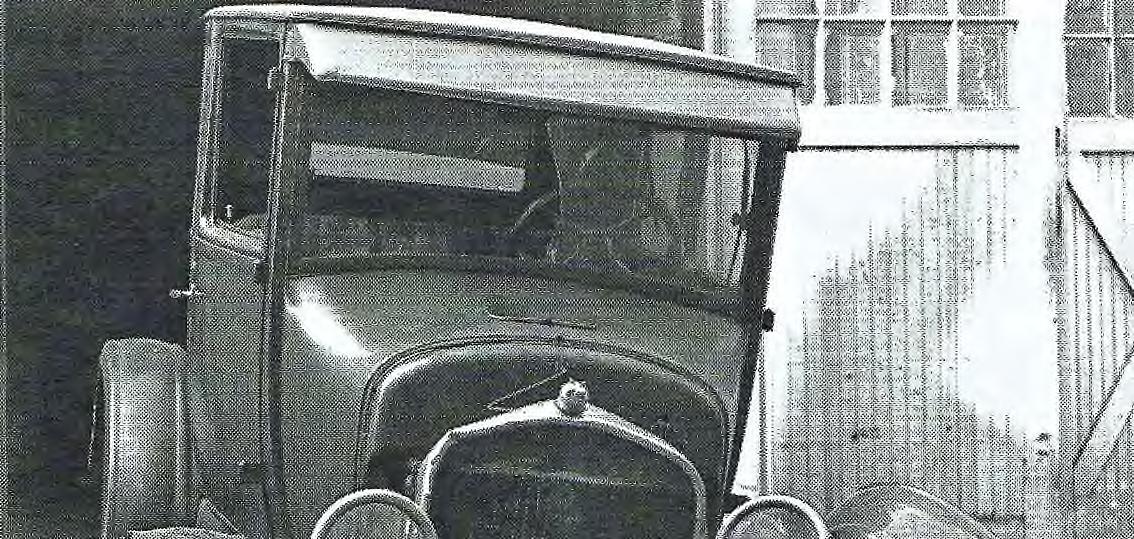
4 minute read
The Nash - (US) 1917>1957
HE ASH
NASH MOTOR COMPANY, KENOSHA, WISC. 1917-1954 AMERICAN MOTORS CORP., KENOSHA, WISC. 1954-1957
Charles W Nash, the former President of General Motors, acquired the Thos. B. Jeffery Co in July 1916, and from the 1918 season onwards the cars were marketed under his name. The first Nash was a 4-litre six with push-rodoperated overhead valves, followed by in 1922 by a 4-cylinder car which also had overhead valves at a time when most American manufacturers adhered to the L-head. Rubber-mounted engines appeared in the same year, when Nash sold 40,000 medium priced cars (the four cost $985, the six about $500 more). In 1924 Nash acquired the defunct Mitchell concern at Racine and the ailing Lafayette Co of Milwaukee, producers of a luxury V8 (when the latter name was revived in 1934 it was used for an uninspired side valve 6cylinder machine selling for under $600). In 1925-26 they also produced, the 6-cylinder Ajax, a side valve machine which they developed into a cheap line. 1926 NASH Model 21 Light Six 3-litre sedan During the latter part of the Vintage era the company concentrated on 6-cylinder cars, with side valves in the cheaper models and ohvs in the higher priced range, though 1930 saw a 4.9 litre straight-8 with a dual coil ignition and ohvs, a type that was progressively developed until 1942. Engines of this type were used in the British Jensen of 1939. The company successfully rode out the Depression though sales did drop to below 15,000 cars in 1933 when Nash were building a really big eight with an 11ft 10in wheelbase and a capacity of 5.3 litres as well as two sixes and a smaller straight eight. Synchromesh was adopted in 1932, and overdrive became an option in 1935 when bigger Nashes had the fashionable fastbacks and spatted rear wheels. Other options widely publicised in the later 1930s were seats converting into a bed and the firms ‘Weather Eye’ system of controlled ventilation.

1936 NASH Lafayette 3½ litre coupe
Coil-spring independent suspension and steering-column gear change followed in 1939, in which year a version of the Ambassador Six was available in England with the option of a Perkins 4.7 litre diesel engine in place of the usual push-rod ohv petrol unit. Unitary construction appeared for the first time on the inexpensive side valve 6-cylinder 600 sedan. This was the ancestor of the famous Rambler series and reappeared in 1945. Only 6-cylinder cars were made from 1945 until 1954, and with the advent of the Airflyte range in 1949 unitary construction was standardised. These cars had all four wheels enclosed, and a one-piece wrap around windscreen. In 1950 there came the experimental NXI convertible with an Austin A40 engine later made for Nash by Austin of Birmingham as the Metropolitan, while in 1951 there appeared the 3.8 litre Nash-Healey roadster, a British Healey with an ohv 6-cylnder Nash engine. From 1950 onwards the Rambler accounted for most of Nash’s production, but the original name survived the amalgamation with Hudson and the creation of American Motors in 1954. In 1955 the big Nashes were fitted with an ohv 5.224cc V8 engine, and its Ultramatic
1951 NASH Ambassador Six 3.8 litre sedan transmission being made by Packard. A 5.8 litre A.M.C. built eight was adopted in 1957, but sales were negligible and the 1958 models were known as Rambler Ambassadors.

FROM:THECOMPLETEENCYCLOPEDIA OFMOTORCARS1885TO THEPRESENT. (THIRDEDITION PUBLISHED1985)
L-head (flathead) refers to the pushrod valve-train configuration in which the valves are placed in the engine block beside the pistons. The design was common on early engine designs, but has since fallen from use. Generally L-head engines use a small chamber on one side of the cylinder to carry the valves. This has a number of advantages, primarily in that it makes the cylinder head much simpler. It also means that the valve can be operated by pushing directly up on it, as opposed to needing some sort of mechanical arrangement to push the valves down. It may also lead to slightly easier cooling, as the valves and operating rods are out of the way of the cylinder, making a cooling jacket simpler to construct. The line of intakes along the side of the engine lead to the name L-head, due to the cylinders having the shape of an upside-down L. This configuration is also known as side-valve, as the valves are located beside the cylinders. Due to the heating and efficiency problems, L-head engines fell from high power uses such as aircraft engines fairly quickly, prior to World War I. They lived on for some time in the automotive world but are no longer used in automobile engines, although they remain in common use for small-engine applications in lawnmowers and generators.








